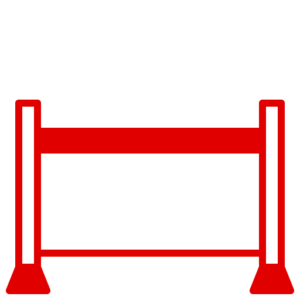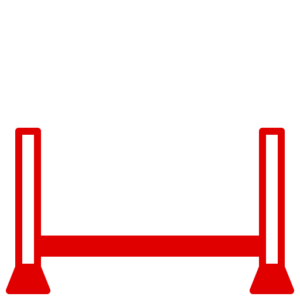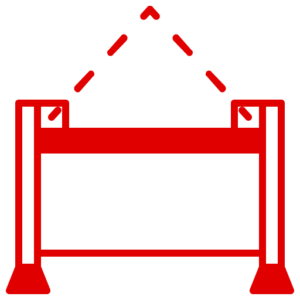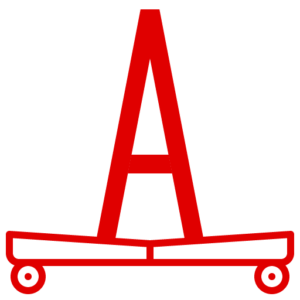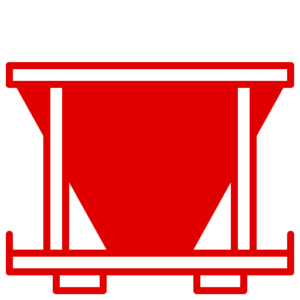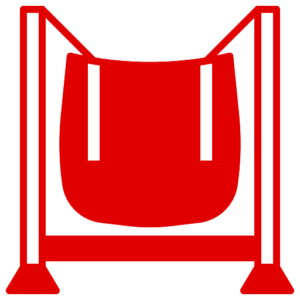News
Navigating the Rigorous Terrain of Nuclear Material Handling
The guide below is a summary of the ONR (Office of Nuclear Regulation) Technical Assessment Guide NS-TAST-GD-056 (Issue 7.1) on Nuclear Lifting Operations.
The introduction and purpose of the Technical Assessment Guide (TAG) involve providing ONR inspectors with guidelines to evaluate safety cases related to nuclear activities. TAGs support the adherence to the Safety Assessment Principles (SAPs) and aid in regulatory judgments. While they align with international safety standards like those of the IAEA, TAGs are designed for inspectors rather than duty holders, offering guidance without prescribing legal obligations.
Specifically, this TAG focuses on lifting operations and equipment crucial in the nuclear industry, defining relevant terms and detailing protocols for both new and operational plants. This includes handling operations that may influence nuclear safety, like lifting radioactive materials or other operations that could impact nuclear facilities. The TAG’s application extends through various phases of a plant’s lifecycle, from design to decommissioning, and emphasises inspector discretion in applying these guidelines to real-world scenarios.
The TAG highlights several statutory instruments relevant to the use, supply, and provision of lifting machinery and equipment in the nuclear sector:
Supply of Machinery (Safety) Regulations 2008 (SM(S)R): These regulations ensure machinery safety from the design stage through to supply.
Lifting Operations and Lifting Equipment Regulations 1998 (LOLER): These focus on safety in lifting operations and equipment.
The Provision and Use of Work Equipment Regulations 1998 (PUWER): These ensure that all work equipment is suitable for its intended purpose.
The Health and Safety at Work Regulations 1974 (HSWA): These provide a broad framework for ensuring the health and safety of all workers.
Reporting of Injuries, Diseases and Dangerous Occurrences Regulations 2013 (RIDDOR): These regulations require the reporting of certain workplace incidents.
Additionally, the Management of Health and Safety at Work Regulations 1999 (MHSWR) apply universally to all work activities, emphasising risk assessments and preventive measures. Other regulations like the Construction (Design and Management) Regulations 2015 (CDM), Electromagnetic Compatibility Regulations 2006, Electricity at Work Regulations 1989, and Work at Height Regulations 2005 also play a crucial role in specific contexts related to lifting equipment and operations.
Appendix 1 and the Guide to the Application of the Machinery Directive provide further detailed guidance on implementing SM(S)R, LOLER, and PUWER effectively.
The relationship between the Safety Assessment Principles (SAPs), WENRA Reference Levels, and IAEA Safety Standards is critical in assessing the safety and operational integrity of lifting operations and equipment in nuclear facilities. Here’s a condensed overview:
Safety Assessment Principles (SAPs):
EKP (Key Principles): Emphasises minimising risks through appropriate plant configuration and layout that consider hazards from lifting operations, optimizing safety systems.
ECS (Safety Categorization/Classification and Standards): Stresses the need for lifting systems to have safety functions and classifications that match their role in nuclear safety, with rigorous standards for design, construction, and maintenance.
EQU (Equipment Qualification): Lifting equipment must reliably perform safety functions under all operational conditions for its intended lifespan.
EDR (Design for Reliability): Advocates for lifting equipment designs that inherently fail safely, incorporating redundancy and protective measures against common cause failures.
WENRA Reference Levels and IAEA Safety Standards:
These frameworks support the SAPs by providing a benchmark for nuclear safety and operational practices, ensuring that lifting operations maintain high safety standards and comply with international safety protocols.
Specific Guidance on Lifting Operations:
EMT (Maintenance, Inspection, and Testing): Guidelines for continuous inspection and maintenance throughout a plant’s lifetime to ensure performance and safety of lifting equipment.
EAD (Ageing and Degradation): Considers the long-term integrity and reliability of lifting systems, factoring in environmental impacts and aging processes.
ELO (Layout): Influences facility layout to optimize the integration and safety of lifting systems.
EHA (External and Internal Hazards): Addresses risks from structural, seismic, or operational hazards that lifting systems might introduce or be exposed to.
EMC/ENC (Integrity of Metal/Non-Metal Components): Ensures the structural and functional integrity of both metallic and non-metallic components of lifting equipment.
ESS (Safety Systems) and ESR (Control and Instrumentation): Emphasises the need for protective and control systems to maintain safe operation of lifting equipment.
EHF (Human Factors): Recognizes the significant role of human interaction in the operation and safety of lifting systems.
These principles and guidelines form a comprehensive framework aimed at ensuring the safety and reliability of lifting operations in the nuclear industry, integrating global standards and specific operational requirements.
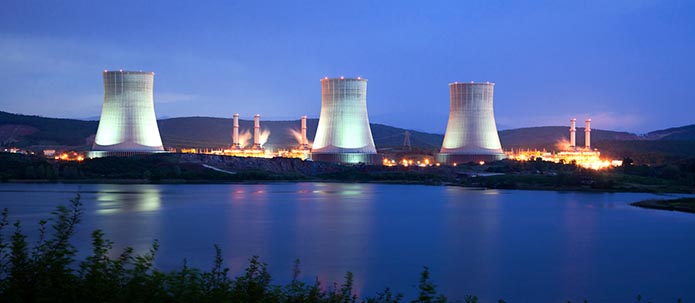
Advice to Inspectors on Lifting Operations in Nuclear Facilities
Overview of Safety Assessments: This guide assists inspectors in evaluating safety cases involving lifting operations on or near nuclear sites, including the transport of nuclear materials. The focus is on lifts that could potentially impact nuclear safety, encompassing more than just the movement of nuclear material.
Definition and Impact: A “nuclear lift” is any lift that could directly or indirectly lead to radiological consequences, often due to high-energy impacts affecting critical safety infrastructure.
Inspector Guidance: Inspectors should be aware that lifting and transporting loads could disrupt the safety mechanisms designed to protect nuclear processes and barriers under normal or faulted conditions.
Safety Case Requirements:
Risk Reduction: The safety case must demonstrate risk reduction to As Low As Reasonably Practicable (ALARP).
System Identification: It should identify critical structures, systems, and components of the lifting system.
Condition Analysis: Recognize both normal and potential fault conditions that could impact the lifting system and other equipment.
Human Factors: Consider the influence of human factors on the safety of lifting operations.
Integrity Management: Ensure the integrity of critical systems throughout their operational life, considering ageing and degradation.
Early Assessment: Inspectors should initially determine how the lifting system integrates within the broader safety case, ensuring assessments are proportional to the risks and consider the severity of potential hazards.
Reliability and Industry Knowledge: Inspectors might weigh safety claims differently based on broader industry knowledge. Consultation with specialists might be necessary to ensure regulatory consistency and proportionality.
IAEA Safety Functions: Lifting system failures could impact fundamental safety functions like reactivity control, heat removal from the core, and containment of radioactive materials.
Safety Case Strategies:
Dropped Load/Impact: This strategy considers the robustness of a lifting system to prevent unacceptable releases or impacts.
Low Probability of Failure: Focuses on systems where failure consequences are severe, emphasising the need for high reliability and integrity.
Fault Analysis: Comprehensive fault analysis is crucial, considering all foreseeable fault sequences, including those that could lead to structural collapses or other significant impacts.
Consideration of Internal Hazards: Assessments should account for the potential internal hazards posed by dropped loads, including damage to safety systems and components critical to nuclear safety.
Strength and Stability in Nuclear Lifting Operations
LOLER Compliance and Enhancements: Under LOLER 1998 (Regulation 4), strength and stability are fundamental for lifting operations. In nuclear contexts, standard design codes may be supplemented to align with the importance of safety functions, as outlined in ONR SAP ECS.3. The safety case should validate these enhancements with adequate evidence.
Design Codes and Stability Considerations: Stability concerns are particularly significant for cranes that operate beyond their wheelbase, like jib and dockside cranes, where overturning risks are managed with sufficient counterbalancing or anti-toppling features. These features must maintain stability under both normal and fault conditions, such as overloads or seismic events.
Implications of Enhanced Design Codes: Enhancing design codes often increases the mass, inertia, and stiffness of lifting systems, leading to higher potential impact forces on other plant equipment. This necessitates a comprehensive assessment of all related equipment to ensure they meet their safety function requirements even under faulted conditions.
Proof Testing and Safety Measures
Proof Load Testing: Mandated by the Supply of Machinery (Safety) Regulations, proof load testing is critical but should not be solely relied upon. It must be accompanied by thorough inspections and assessments of fracture mechanics. Regular proof testing, while essential, should be analysed for potential adverse effects on the lifting system’s fatigue life.
Dynamic Fault Conditions: Conventional proof tests, typically at 125% of the safe working load, may not suffice for worst-case dynamic conditions which could see loads increase significantly. These conditions include failed ropes in dual-reeved systems and seismic events that amplify load stresses, potentially leading to catastrophic failures like tensile fractures or stability loss.
Safety Case Enhancements: A conventional design may not suffice in nuclear applications due to the required fault tolerance. Additional safety measures like enhanced braking systems or redundancy may be necessary. These systems should be robust and continuously evaluated throughout the equipment’s life to ensure safety and reliability.
Emergency Measures and Redundancy: Incorporating features like emergency braking directly on the rope drum or additional brakes can mitigate risks associated with mechanical or electrical failures. The design should account for the dynamic loads these safety features introduce, assessing their impact on the system’s fatigue life.
Single Failure Proof Systems: Adopting single failure proof hoist systems, which ensure redundancy in load paths, can significantly reduce the risk of uncontrolled lowering. These systems, however, introduce new potential fault modes that must be thoroughly assessed to maintain the integrity of the safety principle.
Redundancy and Diversity: Systems that provide independent load paths offer redundancy and diversity, enhancing safety but also requiring careful evaluation of dynamic effects from primary system failures. High reliability systems should be scrutinized to ensure they meet the robust standards expected in nuclear operations.
Practical Application of Safety Claims: Ultimately, the engineering solutions employed must demonstrably achieve the claimed benefits in practice, ensuring that risks are managed ALARP and comply with rigorous safety case requirements as outlined in ONR’s SAPs.
Recovery Philosophy and Reliability in Nuclear Lifting Operations
Recovery Strategy: In nuclear operations, the approach to recovering a suspended load is critical. For systems like cranes that may break down, ensuring there is a reliable and effective recovery plan is essential. This might involve emergency actions like tripping reactors or stopping processes to mitigate risks before attempting recovery. In some cases, especially with ‘single failure proof’ systems, alternative lifting mechanisms might be necessary for load recovery, introducing new risk factors that must be carefully managed.
Radiological Considerations: Recovery operations in radiological environments may restrict access to affected areas, necessitating remote-operated lifting and recovery systems. These systems should be rigorously tested during commissioning to cover all foreseeable scenarios and maintained regularly to guarantee operational readiness.
Reliability of Lifting Equipment: Reliability data for lifting systems is often complex due to diverse equipment types and variable usage conditions, compounded by operator error. When available, reliability data must be specifically relevant to the intended operational context of the lifting system. Short-duration operations should not rely solely on existing data due to inherent uncertainties, which should be addressed through conservative decision-making and thorough uncertainty analysis.
Design for Reliability: Inadequate initial design can lead to low reliability rather than just wear over time. Emphasising reliability from the design stage can prevent many operational issues. Reliability studies focusing on human factors and control systems can offer insights that improve overall system safety, particularly in hazardous environments.
Human Factors in Nuclear Lifting Operations
Human Role and Error: Human involvement in lifting operations can significantly affect safety. Errors made during lifting can lead to accidents, yet human actions are often essential to completing lifts safely. Safety cases must substantiate how human actions contribute to safety functions.
Minimising Human Error: Where practical, lifting operations should reduce dependence on human actions by implementing higher-level engineered controls. However, some reliance on human performance is inevitable, requiring comprehensive planning and supervision to ensure safety.
Systematic Integration of Human Factors: Human factors should be systematically incorporated into all aspects of lifting operations, from design and planning to execution and maintenance. This includes:
Designing operations and equipment to support human performance.
Planning lifts according to best practices, such as those found in BS 7121.
Ensuring all lifting activities are well-supervised and adhere to strict safety protocols.
Regular inspection, maintenance, and testing of lifting equipment.
Substantiation and Compliance: Human actions critical to safety must be clearly identified and their necessity substantiated. This includes ensuring sufficient, competent personnel are available and fit for their roles. Human reliability assessments are crucial for evaluating the effectiveness of both human actions and administrative controls.
Guidance and Further Reading: ONR provides additional guidance on human reliability analysis, human factors integration, and the allocation of functions between human and engineered systems, which can help enhance safety measures and compliance in nuclear lifting operations.
If you are interested in how our high quality stillages, cages or trolleys can improve your processes, please contact us here or drop us a call on 01889 563244.


